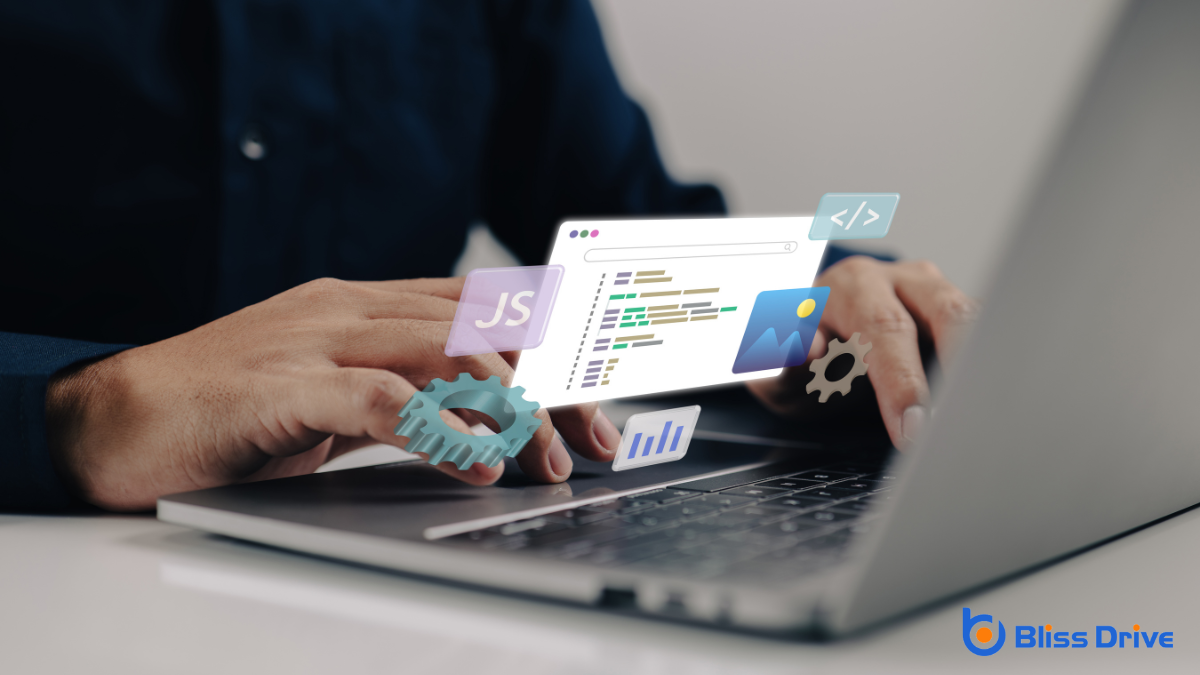Digital Marketing Services
Learn More About Us

When considering the creation of a website, many of us wonder if coding skills are necessary to effectively use a website builder. While platforms like Wix and Squarespace offerThe specific product or service being promoted by affiliates. user-friendly, drag-and-drop interfaces, the need for coding skills can still linger in our minds. Could coding knowledge enhance our website-building experience, or are these tools sufficient for our needs? Let's explore the possibilities and limitations of using website builders without coding expertise.
When we explore the features of popular website builders, it's clear that these tools offer a range of user-friendly options that streamline the creation process.
We find that most builders come with customizable templates, allowing us to choose designs that fit our needs without starting from scratch. They often include built-in SEO toolsSoftware and online tools used for various aspects of SEO, such as keyword research and link buildin..., helping our sites rank better in search results.
Many offer mobile-responsive designs, ensuring our websites look great on any device. Integrated analyticsThe systematic computational analysis of data or statistics to gain insights and support decision-ma... can provide insights into visitor behavior, so we can make data-driven decisions.
Additionally, these platforms typically offer various plugins and apps to enhance functionality. With these features, we can focus on creating content while the technical aspects are managed by the builder itself.

As we explore the basics of drag-and-drop interfaces, it's evident that these tools revolutionize website creation with their simplicity and efficiency. They allow us to build web pages by simply dragging elements like images, text boxes, and buttons directly onto a canvas. This intuitive approach eliminates the need for coding, making web design accessible to everyone.
We interact with a user-friendly interface that visually represents the website's structure. This allows us to instantly see changes and arrange elements with precision.
The beauty of drag-and-drop lies in its ability to transform complex coding tasks into manageable visual actions. We can experiment and modify layouts easily, fostering creativity without technical hurdles. By providing immediate feedback, these interfaces empower us to design confidently and effectively.
Let's explore how we can personalize our websites without touching a single line of code.
With drag-and-drop tools and pre-designed templates, we've got the power to shape our site exactly how we envision.
A user-friendly interface makes it easy for us to make adjustments, ensuring our website reflects our unique style and needs effortlessly.
Drag-and-drop tools revolutionize the way we create websites by allowing us to customize layouts without needing to write a single line of code. These intuitive interfaces empower us to build visually appealing websites by simply selecting elements—like text boxes, images, and buttons—and placing them where we want.
It’s as simple as clicking and dragging, providing us with complete control over our site's design. This approach eliminates the intimidation often associated with coding, making web development accessible to everyone.
We can experiment with different layouts and styles instantly, seeing changes in real-time. This real-time feedback guarantees that we make informed design choices, enhancing the user experience.
Drag-and-drop tools truly democratize web design, enabling anyone to craft professional-looking websites effortlessly.
Pre-designed templates offer a fantastic way to streamline the website-building process, allowing us to start with a solid foundation without needing to code.
These templates provide us with a variety of design options suited for different industries and purposes, giving our websites a professional look from the get-go. They’re crafted by skilled designers, ensuring we've a visually appealing starting point.
The real beauty lies in their customization options. We can easily adjust colors, fonts, and layouts to match our brand’s identity without writing a single line of code.
This flexibility lets us personalize our sites, ensuring they reflect our unique style and needs. Templates empower us to focus on content and functionality, making the website-building journey both efficient and enjoyable.
While starting our website-building journey, a user-friendly interface can be our greatest ally, offering customization options without the need for coding. It empowers us to shape our site’s look and feel through intuitive drag-and-drop features that simplify design.
We can easily adjust colors, fonts, and layouts with just a few clicks, making our site truly ours without touching a single line of code. These interfaces often come with visual editors that provide real-time previews, helping us see changes instantly.
This immediate feedback guarantees our design choices align with our vision. Furthermore, many builders have built-in guidance tools and helpful prompts, making the process seamless.
Having coding knowledge offers several advantages when using a website builder. While these platforms are designed for ease, understanding code can enhance our experience and the final product.
Let’s explore how coding skills can benefit us:

Although code-free website builders make it easy for anyone to create a website, they come with their own set of limitations.
We find that customization can be restricted. While templates are convenient, they often limit our ability to make the site truly unique. There's only so much we can tweak before hitting a wall.
Additionally, these builders mightn't offer the advanced features we need for complex functionalities. If we want specific integrations or custom interactions, we might be out of luck.
Performance is another concern. Code-free builders often add unnecessary code, which can slow down our website.
Ultimately, scalability might be an issue. As our site grows, we could face challenges in maintaining and expanding it without the flexibility that coding knowledge provides.
Let's explore how different website builders meet various needs like e-commerce features, bloggingWriting and publishing articles on a website to provide information and engage readers. capabilities, and design flexibility.
We'll look at which platforms excel in supporting online stores, which ones offer robust tools for bloggers, and how design options vary.
In the domain of e-commerce, selecting the right website builder is crucial to meet diverse business needs.
We need to evaluate the features each platform offers to guarantee it aligns with our goals.
Let's explore key e-commerce platform features that can enhance our online store experience:
These features can greatly impact our e-commerce success, so let's choose wisely.
After considering e-commerce features, another important aspect of choosing a website builder is its blogging capabilities.
Whether we’re aiming to share insights, storiesA feature on platforms like Instagram and Facebook where users can post photos and videos that disap..., or updates, a robust blogging platform is essential. Let’s explore the options:
Squarespace offers a sleek interface and easy-to-use blogging tools, making it a favorite for those who want elegance and functionality.
WordPress.com, known for its vast plugin library, provides flexibility for more customized blogging experiences.
Wix, meanwhile, gives us intuitive drag-and-drop features, ideal for beginners who prefer simplicity.
Each builder has its strengths.
Squarespace excels in design, WordPress.com in customization, and Wix in ease of use.
When selecting a website builder, design flexibility is a critical factor that influences how we tailor our online presence to fit our unique needs.
We want a platform that lets us express our brand while offering the customization we require.
Let’s explore the design flexibility options available in popular website builders:
Choosing a builder with the right design flexibility helps us create a site that truly reflects our vision.
Although mastering website design may seem intimidating at first, we can considerably enhance our skills by focusing on a few key strategies.
First, let's immerse ourselves in design inspiration by exploring successful websites, noting what works well. This helps us understand design trends and effective layouts.
Next, practice regularly by building mock websites or redesigning existing ones. This hands-on approach strengthens our design intuition and familiarity with various tools.
We should also seek feedback from peers or online communities, which offers fresh perspectives and constructive criticism.
Additionally, staying updated with design resources and tutorials guarantees we’re aware of the latest tools and techniques.

Building on our enhanced design skills, we might wonder if learning to code is the next step in crafting exceptional websites.
Let’s weigh our options to decide if coding fits our goals. Coding can open doors to customization and flexibility, but it's not always necessary.
Consider these points:
To sum up, we don’t need coding skills to effectively use website builders like Wix and Squarespace. Their intuitive drag-and-drop interfaces and customizable templates make it easy for anyone to create a professional-looking site. However, knowing how to code can expand our customization options and improve problem-solving capabilities. Whether we choose to learn coding or not, these platforms provide ample tools to build impressive websites tailored to our needs. Let’s harness these resources and start creating!
